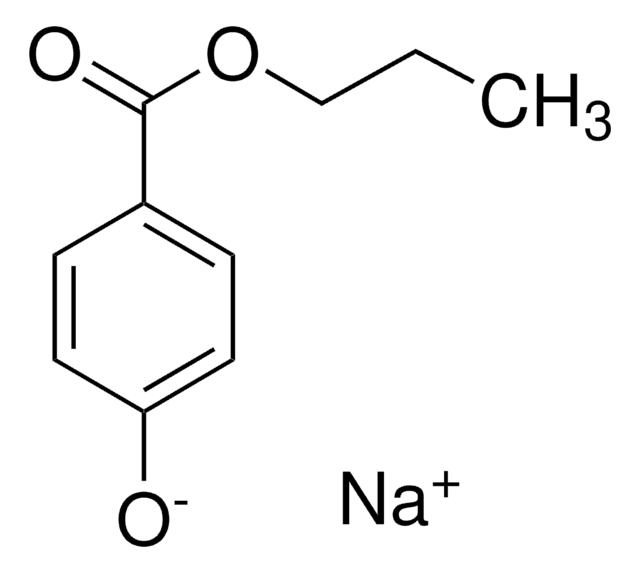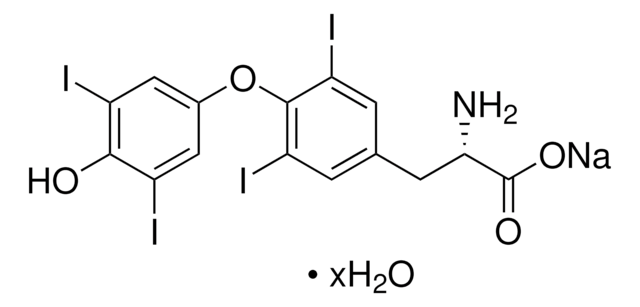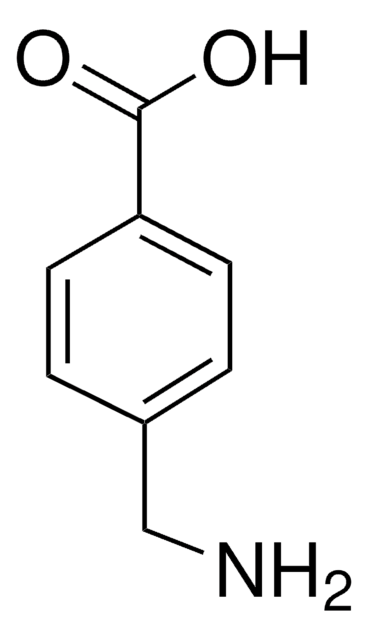W295101
Propyl 4-hydroxybenzoate
≥99%
Sinónimos:
4-Hydroxybenzoic acid propyl ester, Propyl paraben
About This Item
Productos recomendados
biological source
synthetic
grade
Fragrance grade
agency
follows IFRA guidelines
reg. compliance
EU Regulation 1223/2009
assay
≥99%
mp
95-98 °C (lit.)
application(s)
flavors and fragrances
documentation
see Safety & Documentation for available documents
food allergen
no known allergens
organoleptic
burnt; smoky
SMILES string
CCCOC(=O)c1ccc(O)cc1
InChI
1S/C10H12O3/c1-2-7-13-10(12)8-3-5-9(11)6-4-8/h3-6,11H,2,7H2,1H3
InChI key
QELSKZZBTMNZEB-UHFFFAOYSA-N
¿Está buscando productos similares? Visita Guía de comparación de productos
General description
Certificados de análisis (COA)
Busque Certificados de análisis (COA) introduciendo el número de lote del producto. Los números de lote se encuentran en la etiqueta del producto después de las palabras «Lot» o «Batch»
¿Ya tiene este producto?
Encuentre la documentación para los productos que ha comprado recientemente en la Biblioteca de documentos.
Los clientes también vieron
Nuestro equipo de científicos tiene experiencia en todas las áreas de investigación: Ciencias de la vida, Ciencia de los materiales, Síntesis química, Cromatografía, Analítica y muchas otras.
Póngase en contacto con el Servicio técnico



